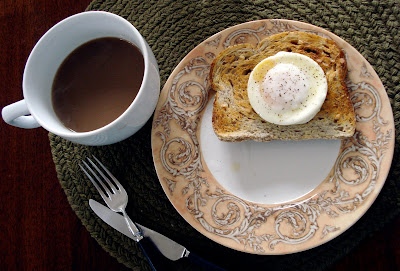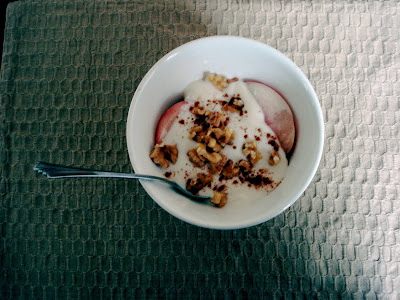
I hate to be a bit of a downer, but if there's anything I've noticed in the clutters of my last three years at college, it's that there is no place lonelier than a college campus.
True, the immaculate buildings and paved pathways are full of life- students making their way to their upcoming classes, groups of professors engaged in deep conversation, jabbering activists at club tables, coffee-sipping wanderers, and non-university affiliated people, who, depending on what they want from life, are on campus to ask for money, spread some religious speak, or walk their dogs.
That's a lot of action, no doubt. Yet, to me, it seems, if you look behind the surface, you'll find that everyone is just lost in the process of
going somewhere. Whether it's a career, a political goal, or a new scientific discovery, each person seems to have an end and is consequently on campus to pursue it. For a hopeless idealist like myself- you know, that person that likes to point out the yellow ladybug on the plant in front of the library where everyone's smoking, or recite a poem, or tell you that she has no clue what to do with her life- it's not so great.
It is nice, however, when I run into someone I know. My heart, which has sunken into my chest upon seeing so many despondent faces on the way to class, leaps up and comes to life. I feel, once again, alive as a deluge of happiness warms my body and I skip to my next class.
When that doesn't happen, I get some pretty crazy ideas.... and by the time I get home my head is spinning and I need some kind of release. Luckily, there's a kitchen for that.
So let me just say, that after a hectic and depressing day on such a lonely cement microcosm, I made an incredible discovery in the kitchen: roasted poblano peppers. Oh man.

I was making a bean dish called "drunken beans," which was fine and dandy, but I swear, the best part of the entire process, the part that made me forget all of my troubles, was what the recipe considered a "topping"- those darned roasted peppers.
Think of it- you start with these shiny green poblano peppers. You then wash and dry them, place them on a baking sheet, and throw the arrangement into an oven burning at 400 degrees Fahrenheit. Then, after a little bit of TLC, you pull them out of the oven and observe their charred skin bursting with flavor and heat. After letting them cool, you peel off the skin to reveal the smooth, flavor-packed pepper itself, which, if you're me, you pull apart with your hands, place on a warm flour tortilla and devour, noticing that your worries and whims have sweated out of you and collected into a puddle on the floor. Then, again, if you're me, your lips will be on fire and you'll need to grab a glass of milk or water. heh.
So, I'm going to stop ranting and give you the beans recipe- which is also delicious. You know what to do with those peppers, whether you put them on the beans or not. I think my next project is chile rellenos. I can't wait.
Drunken Beans with Roasted Poblano Chiles
adapted from Rancho Gordo's suggested recipes
I used heirloom beans, which are great in terms of texture... and they come in really neat colors! See if you can get your hands on them!
1-1.5 cups dried beans (your choice on the amount/type... soaked overnight (see below))
3 pieces of bacon or, what I used: 1 piece of pancetta bacon thickness (your butcher will know what you're talking about!)
1 yellow onion, diced
4 cloves garlic, minced
a handful of mushrooms, diced
1 bottle of Mexican beer (you'll end up using a little over half of it)
3 poblano chiles (sigh)
Rinse the beans and place in a pot, covering them with an inch of water. You'll want to soak them overnight.
On the eve of the cooking day, preheat the oven to 400 degrees Fahrenheit. Cut up your pancetta or bacon in small pieces and throw it in a medium or large pot. Cook at a medium-high heat until the meat is dark and crisp and the fat is rendered (cooked down to a liquid). Add the chopped onions and garlic- if there's not enough liquid in the pan then feel free to add some oil. Then add the mushrooms and stir a bit. At this point I'd add some salt and pepper, then pour the beans with their soaking water into the pot. Bring the mixture to a boil and then simmer at low heat. You'll also want to salt your beans at this time.
While this happens wash the peppers, dry them, and place them on a baking sheet. Then put that sheet in the oven. You'll want to check on them every 10 minutes or so and flip them to make sure that the sides cook evenly. The time to take them out will be when it looks as if the skin of the peppers is evenly charred on all sides (see picture). Take them out of the oven, let them cool, and then proceed to peel the skin away, take out the seeds, and chop the peppers up into bite-size pieces. Set aside in a bowl.
So at this point, you'll want to add your beer to the beans, which will have cooked away a lot of liquid. The amount you add is up to you. I poured the whole bottle in there, which is a step I might revise next time. I'd start with half a bottle and see how you like the way things are cooking. You'll know the beans are done when their texture is smooth and creamy- not starchy. Then you've got it!
Serve the beans with the poblano chiles on top, a squeeze of lime, and warm corn tortillas on the side.
Buen provecho!




































